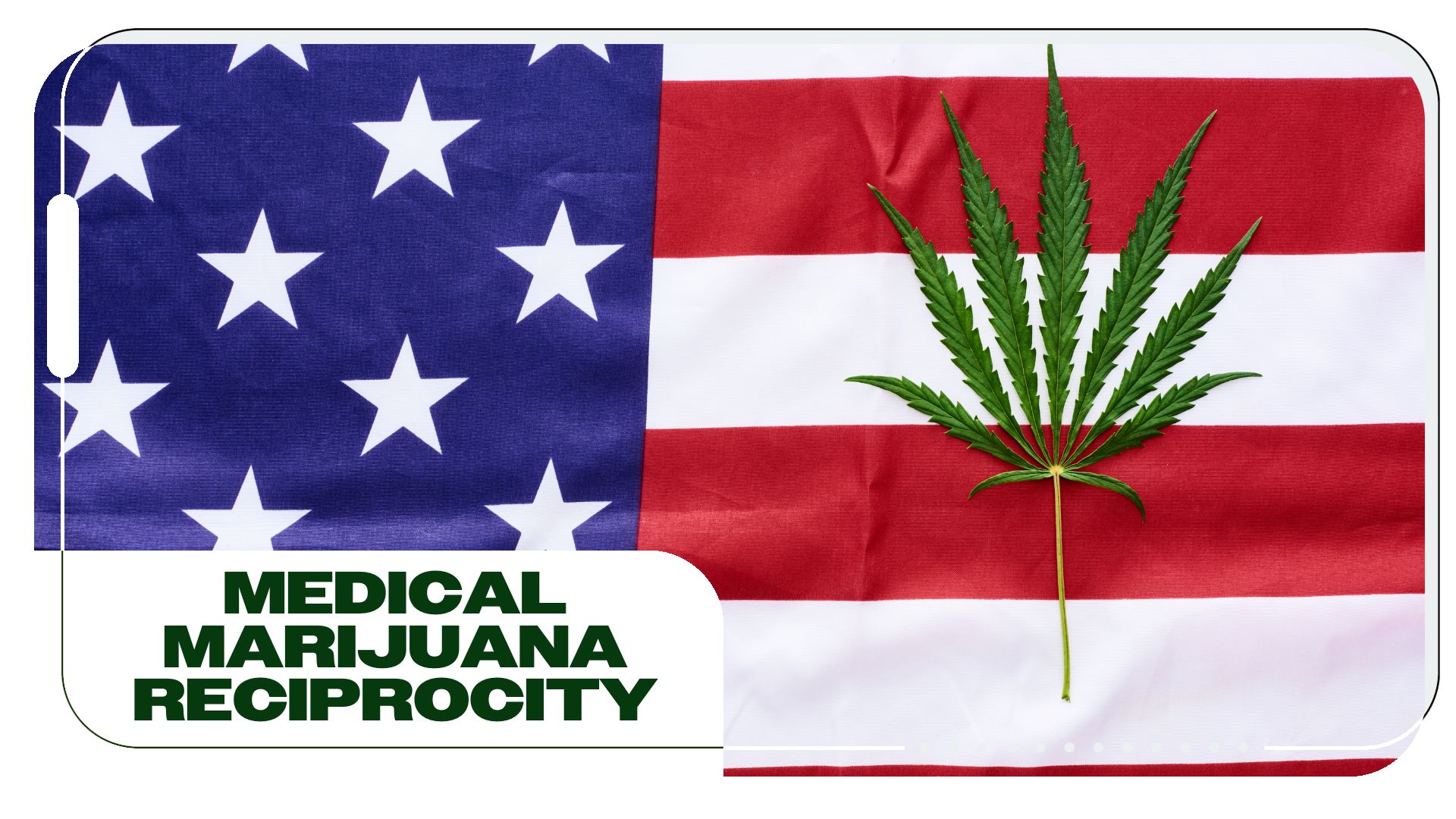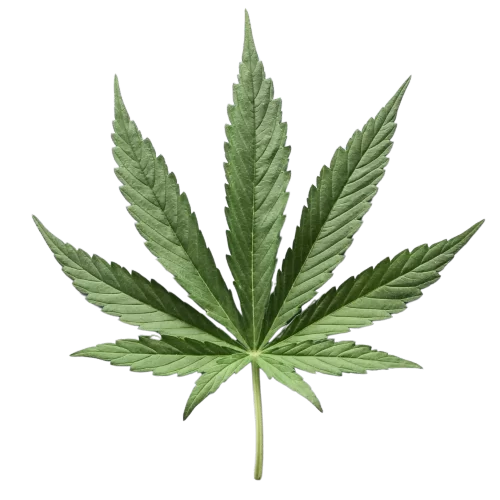Laced weed, sometimes referred to as dipped weed, is cannabis that has been combined with other substances that are typically illicit drugs or harmful chemicals. There are a few reasons why someone would lace cannabis, some more malicious than others. No matter the reason, though, mixing psychoactive substances comes with risks, and laced weed is always a cause for concern.
Although weed bought through licensed medical and recreational dispensaries must undergo strict testing and meet government standards, making it a safe choice, not everyone has access to these products. People who are purchasing cannabis from the illicit market are more likely to encounter laced weed. If this is you, there are a few key precautions you can take to avoid using dangerously altered cannabis.
What Does Laced Weed Mean?
Laced weed simply refers to cannabis products, typically flower or concentrates, that have been mixed or contaminated with other substances. These substances can range from natural bacteria to deadly additives like fentanyl. However, no matter what the cannabis is mixed with, it poses risks to the user as it can lead to unintended side effects and health risks.
Why do people lace drugs and, in particular, cannabis? Some of the general reasons why someone would lace cannabis include but are not limited to the following:
- To intensify the effects of cannabis in hopes of repeat business
- To increase the weight of cannabis so that less can be sold for more
- To intoxicate someone unknowingly, most commonly to take advantage of them in some way or increase their dependency on the substance
Laced weed can be dangerous for many reasons, most of which depend on what the weed was laced with. Some of the potential dangers of laced marijuana include nausea, vomiting, increased heart rate, trouble breathing, fainting, dizziness, or even death.
Cannabis isn’t the only substance that is commonly laced — many substances pose this threat. Lacing is sometimes referred to as “cutting.” This terminology is most commonly used in reference to how illicit drugs, such as heroin and cocaine, are manufactured and what “cuts” (ingredients) are mixed in. In the case of cocaine or heroin, it is much cheaper to cut or lace the product with synthetic opioids, such as fentanyl, allowing dealers to drastically increase profits at an unfortunate cost to the end consumer.
You’re probably asking yourself: How common is it for people to lace marijuana? While it is probably more common than you think, it isn’t so common that you should avoid consuming cannabis altogether simply because of the risk of potentially consuming laced marijuana. According to reports, there has been an uptick in drug overdoses caused by fentanyl-laced illicit cannabis in recent years. Fortunately, with a little common sense and some precautions, you can decrease your risk of ever coming into contact with contaminated weed.
How To Tell If Weed Is Laced
How can you tell if cannabis is laced? This is a great question. Unfortunately, the only sure way to be 100% certain is through testing, but that doesn’t mean there aren’t steps and precautions that you can take to minimize the risk of consuming laced marijuana.
Follow these tips for peace of mind in knowing that your cannabis is safe:
- Purchase your cannabis legally from licensed, regulated dispensaries.
- When you purchase a product, request its certificate of analysis — a report of the results from laboratory testing that verifies its safety and ingredients.
- Always smell your cannabis carefully before consuming it, paying close attention to any aromas that are not natural for cannabis.
- Inspect your cannabis thoroughly before consuming it, paying close attention to anything that appears crystal-like or powdery on the exterior of the buds or in the container.
- Test your cannabis with testing strips to ensure there are no unknown substances present.
- Grow your own cannabis! Not only is home cultivation therapeutic and better for quality control, but it also prevents any concern about the safety of your cannabis.
What Can Cannabis Be Laced With?
Cannabis can be laced with many additives, including everything from illicit street drugs to pharmaceuticals, over-the-counter medications, or household cleaning products. Each of them has a different impact on the user. While stimulants that are added to cannabis will result in the person experiencing stimulating effects, central nervous system depressants added to marijuana will produce significant feelings of sedation.
Let’s look at some of the most common things cannabis is laced with, along with why someone would lace cannabis with these substances and the potential side effects they present.
Fentanyl
Fentanyl-laced cannabis is one of the most commonly reported illicit cuts. Since fentanyl does not have a defined taste, you will have to rely on sight and smell. If you notice white or blue-tinted crystals or powder-like residue on your cannabis, it could be laced with fentanyl. Fentanyl is described as having a gasoline or nail polish-like scent that should be distinguishable from any gassy notes in cannabis.
The only sure way to ensure that your cannabis is not laced with fentanyl is to use a test strip to test for its presence. Fentanyl-laced weed can cause many different symptoms, and just a small amount can lead to fatality.
Symptoms include slowed breathing, confusion, dizziness, clammy skin, slowed heart rate, hallucinations, sleepiness, low blood pressure, and constipation. If you experience any of these symptoms and suspect you may have consumed fentanyl-laced cannabis, seek medical attention immediately.
When in doubt, test your drugs: fentanyl test strips are available online and at most smoke shops.
Lead or Other Heavy Metals
Although some shady dealers may add heavy metals like lead or mercury to cannabis to increase its weight, the most common reason for metal contamination in weed involves the growth environment of the cannabis plant. Weed and hemp are excellent at drawing heavy metals out of the soil and up into their stalks, leaves, and trichomes, which makes them ideal for remediating natural areas but potentially toxic to consumers.
Heavy metals are very dangerous and can cause severe health problems when ingested or inhaled. Lead exposure, for example, may lead to brain damage and a range of other health issues, including kidney damage or anemia. The danger is heightened because the symptoms of heavy metal poisoning may be subtle and develop slowly over time, making it difficult to identify the cause. People who use marijuana to treat symptoms of cancer or other illnesses are also at an increased risk of experiencing health impacts.
Smoking or consuming cannabis contaminated with heavy metals can result in chronic toxicity, which is particularly concerning for regular users. You can ensure your cannabis is pure and grown in safe areas by buying from regulated dispensaries that conduct lab testing.
Glass
Weed laced with glass is another dangerous form of contamination that has been reported and is often done to increase the quality or weight of the product. Tiny glass particles, usually in the form of finely ground glass or sand, are added to the buds to give them a sparkly appearance and make them feel denser. This practice is very hazardous since inhaling or ingesting glass particles can cause serious health problems.
When smoked, glass-laced weed can lead to respiratory issues if the sharp particles irritate the lungs and airways. Ingesting glass can cause cuts and abrasions in the mouth, throat, and digestive tract, leading to pain, bleeding, and potentially more severe internal injuries. Additionally, these particles can contribute to long-term respiratory damage and raise your risks of infections or chronic lung conditions.
Detecting glass-laced weed can be difficult, but there are a few signs to watch for. These include an unusually gritty texture, sparkling appearance under light, or a harsh, irritating sensation when smoked.
Fungus and Bacteria
Weed isn’t usually intentionally laced with fungi or bacteria but rather a result of natural processes — however, it’s still fairly unpleasant for people consuming it. It’s particularly concerning for people who have preexisting health conditions like immune disorders or respiratory problems.
Cannabis may become contaminated by fungi or bacteria at any stage in its life cycle, whether that be the growth process, drying and curing, or in storage. It often results from too much moisture or humidity, impure water sources, poor storage and handling practices, or inadequate ventilation in grow and storage rooms. Weed plants can be at higher risk for bacteria if grown outdoors.
Moldy or mildewed weed will have a white, powdery substance on its surface. It may also have a damp or musty smell or feel damp to the touch.
Inhaling bacteria or mold spores can lead to health complications like respiratory infections, stomach issues, allergic reactions, coughing, and shortness of breath. The best way to avoid these problems is by carefully smelling and feeling your weed as well as purchasing from sources that utilize quality grow facilities.
PCP
PCP is one of the most dangerous adulterants that can be added to laced weed. Not only does it pose a number of mental and physical health risks, but it’s a powerful hallucinogenic drug that can be an extremely disorienting and frightening experience for an unsuspecting user.
PCP-laced weed may result in agitation, paranoia, hallucinations, difficulty with movement or coordination, increased heart rate and blood pressure, seizures, loss of consciousness, or overdoses. In severe cases, it can be fatal. PCP may be cut into weed to try and increase people’s addiction rates or add weight. If you suspect that you or someone else has consumed PCP-laced weed, seek medical care immediately.
To check for this problem, examine your cannabis for unusual metallic tastes or smells. If you smoke it, you may feel numbness, sweating, or drowsiness coming on quickly, which is not normal for typical weed and a sign that it has been cut with another substance.
Heroin
Heroin-laced weed is an extremely risky and potentially harmful form of adulterated cannabis. This combination can lead to intensified sedative effects, extreme drowsiness, and a dangerously slowed respiratory rate. Heroin’s addictive properties mean that smoking heroin-laced weed can quickly lead to dependency with increased risks of overdose and respiratory failure.
The danger is exacerbated by the fact that most people are unaware their cannabis has been tainted with heroin, leading to potentially fatal consequences. Determining if your weed has been cut with heroin can be tricky, but you can check for the following:
Why You Should Get Your Medical Marijuana Card
Veriheal has satisfied millions of patients nationwide by giving them access to these benefits
- Larger purchase limits
- Peace of mind
- Enhanced legal protection
- Access to higher potency strains
- Save up to 25% on cannabis purchases
- Skip the line at the dispensary
- white or brown powdery or clumpy residue
- a chemical or vinegar-like smell
- bitter, chemical taste (however, tasting is not advised)
Chemical drug testing kits are able to detect the presence of heroin if you’re still unsure. When in doubt, throw it out.
Embalming Fluid
Another common cut that illicit drug dealers use is embalming fluid or formaldehyde, as it drastically weighs down the plant material and increases the weight, meaning dealers can sometimes double or triple their product weight and increase profits for little cost. Cannabis dipped in embalming fluid is sometimes referred to as “fry.”
According to the U.S. Department of Justice, “Embalming fluid reportedly produces a hallucinogenic effect and causes the cigarette [joint] to burn more slowly, potentially resulting in a prolonged high.” Symptoms of exposure to embalming fluid include “bronchitis, body tissue destruction, brain damage, lung damage, impaired coordination, and inflammation and sores in the throat, nose, and esophagus.”
Embalming fluid tends to have a strong pickle-like aroma, so if you notice a vinegary stench coming from your stash, your cannabis may be laced with this rather gross additive.
Cocaine
Cannabis can be laced with cocaine; however, in most cases, this does not occur unless there is ill intent or the end consumer combines the two willingly. Someone may choose to lace cannabis with cocaine if they were consuming both and wanted a way to counteract the negative effects of cocaine, such as nausea.
Some of the potential side effects of consuming THC laced with cocaine include elevated heart rate and blood pressure, which presents a higher risk for stroke or heart attack. If you notice a metallic taste in your cannabis or your lips become numb when smoking, your weed could be laced with cocaine. You may also be able to see a fine white powder on the buds, but cocaine is very fine, so this can be challenging to spot.
Laundry Detergent
If illicit dealers are selling old or poor-quality cannabis buds, they may attempt to make it appear higher quality by adding laundry detergent. This can mask bad odors or even make the weed appear brighter and fresher.
Naturally, this can have disastrous implications on the health of the person smoking the cannabis. Laundry detergent is toxic, and when inhaled or ingested, can cause problems in the lungs or airways, stomach issues, skin irritation, or coughing. In serious cases, it may cause long-term respiratory damage.
Weed laced with laundry detergent may have a strong chemical smell or shiny, sticky residue on the outside of the buds. When inhaled, it’s likely to feel much harsher than normal cannabis smoke or have an unpleasant taste.
LSD
Smoking weed laced with LSD is a common fear among cannabis newbies and anti-cannabis advocates, but fortunately, it’s not a terribly serious threat when smoking since combusting LSD destroys its hallucinogenic properties. However, it’s important to note that ingesting LSD-laced cannabis products orally can still cause these effects.
LSD is a psychedelic known for causing distortions in perceptions of reality, time, thoughts, and senses. Since it can also last upwards of 12 hours, accidentally taking LSD can make for a frightening and disorienting experience. While it has virtually no damaging physical side effects, it can cause mental distress, agitation, paranoia, and confusion.
LSD often comes in liquid form, and it only takes a tiny amount to feel its effects. As such, it can be virtually undetectable in edibles or other cannabis products. Purchase your weed from trusted sources like dispensaries, and seek medical attention if you’re concerned you’ve taken LSD by accident.
Methamphetamine
Methamphetamines, a stimulant like cocaine, is a highly addictive drug well-known for causing paranoia, delusions, and anxiety in users. It’s very strong, leading to physical symptoms like an elevated heart rate, hyperactivity, muscle twitches, and high blood pressure. When abused over a long period of time, it can have a disastrous impact on both mental and physical health.
Dealers may lace weed with meth to get people hooked on their substances more quickly or to disguise poor-quality cannabis as higher quality. Some may also do this in an attempt to use cannabis to negate some of the harsher side effects of meth use.
Meth typically has a white or light blue powdery appearance, but it can be difficult to spot in cannabis. Specialized drug and lab tests are better able to detect the presence of this substance.
Ketamine
Ketamine, a dissociative often used as an anesthetic in medical settings, has been in the spotlight recently for its potential benefits on mental health — but it is also easily abused as a recreational drug. It’s not unheard of for people to greatly enjoy combining weed and ketamine, while others experience negative side effects like dizziness or confusion. Since some like this, though, dealers may add ketamine to cannabis to enhance its effects or make the weed seem more potent.
Weed laced with ketamine can result in difficulty with coordination, drowsiness, sensory distortion, or hallucinations. The best way to identify ketamine in cannabis is through drug or lab testing, but you may notice a telltale numbing sensation quickly after ingestion.
Synthetic Cannabinoids
Synthetic cannabinoids are man-made chemicals, often known by names like “Spice” or “K2,” that are designed to mimic the feeling of THC. But while they may be intended to mimic marijuana, they can have deeply unpleasant and unexpected effects.
Unlike natural cannabis, synthetic cannabinoids may cause severe irritation, hallucinations, paranoia, and even violent behavior. They can also lead to health issues such as rapid heart rate, high blood pressure, seizures, and kidney damage. The potency and effects of synthetic cannabinoids vary greatly, but it is generally an unpredictable and often harmful experience.
Since synthetic cannabinoids look a lot like traditional weed, it can be hard to detect in marijuana products. It’s also fairly uncommon for drug testing to check for these substances. The best way to avoid this is to purchase cannabis from licensed dispensaries and to pay attention to any unusual feelings of agitation or anxiety after consuming your weed.
Side Effects of Laced Weed
Due to the wide range of additives that weed may be cut with, there’s a large variety of physical or mental side effects that may occur from ingesting laced cannabis.
Physical Side Effects
If you are concerned about your stash, here are some of the most common symptoms of consuming contaminated cannabis to watch out for:
- Breathing difficulties
- Diarrhea
- Dizziness/lightheadedness
- Elevated blood pressure
- Elevated heart rate
- Excessive energy
- Irritation
- Mood swings
- Poor coordination
- Vomiting
Psychological and Neurological Side Effects
Additives like PCP, ketamine, LSD, or methamphetamine may impact otherwise normal mental responses and lead to the following:
- Hallucinations
- Paranoia
- Severe Anxiety
- Confusion
- Disorientation
- Delirium
- Impaired cognitive function
Behavioral Side Effects
If someone near you has used laced weed, they may start acting in unusual or out-of-character ways. This can include:
- Violent or aggressive behavior
- Risk-taking actions
- Social withdrawal
- Paranoia
- Impaired judgment
- Increased impulsivity
Severe and Life-Threatening Side Effects
Ingesting chemicals such as laundry detergent, formaldehyde, glass, mold, and heavy metals can have disastrous short and long-term consequences for your health. Additionally, powerful drugs like PCP and cocaine are known to cause problems like heart damage when used over long periods of time or in high doses. Consumption of the substances discussed here may lead to:
- Respiratory distress
- Seizures
- Cardiac complications, such as heart attack
- Loss of consciousness
- Psychotic episodes
- Overdose
Final Takeaways
Cut or laced marijuana is never good. At best, it can cost you hard-earned money. At worst, it can lead to substance abuse, serious health complications, or even death. The most important thing you can do to ensure your cannabis is as pure as the ground it grew from is to purchase it from licensed sources or grow it yourself. While there are some bad apples in every bunch, legal cannabis is much less likely to be contaminated than cannabis from unknown sources.
If you’re new to the world of legal cannabis, make an appointment with an MMJ doctor today to find out if you’re a candidate for medical cannabis and create a consumption plan that works for you.
Frequently Asked Questions
What precautions can one take to avoid taking laced weed?
The best way to acquire safe weed is by purchasing it at licensed dispensaries from sources that undergo quality testing and meet government regulations. However, you can also check your cannabis yourself to ensure it looks, smells, feels, and tastes normal.
What are the treatment options for marijuana addiction?
The most popular treatment option for marijuana addiction involves various forms of behavioral therapy in an inpatient or outpatient program.
This article was originally published on October 25, 2023, and updated on August 13, 2024.
Author, Share & Comments







